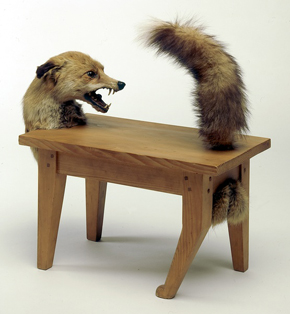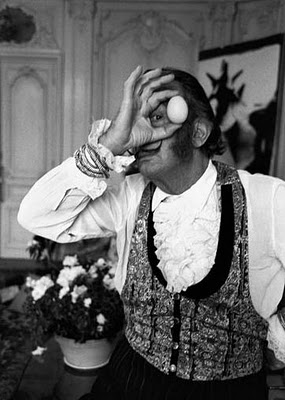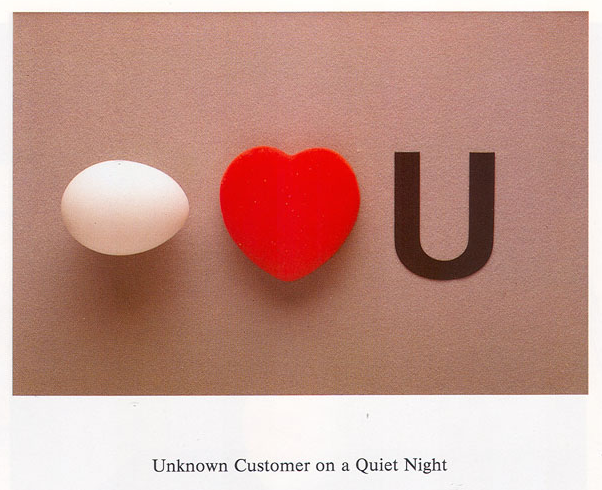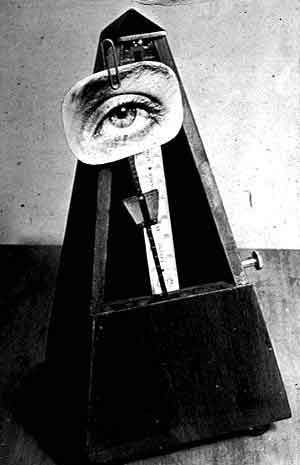This article is about the Surrealism
 Surrealism is a “Cultural movement” that began in the early 1920s, and is best known for its visual artworks and writings. The aim was to “resolve the previously contradictory conditions of dream and reality.” Artists painted (occasionally disturbing) illogical scenes with photographic precision, created strange creatures from everyday objects and developed painting techniques that allowed the unconscious to express itself
Surrealism is a “Cultural movement” that began in the early 1920s, and is best known for its visual artworks and writings. The aim was to “resolve the previously contradictory conditions of dream and reality.” Artists painted (occasionally disturbing) illogical scenes with photographic precision, created strange creatures from everyday objects and developed painting techniques that allowed the unconscious to express itself
Surrealist works feature the element of surprise, unexpected juxtapositions and non sequitur; however, many Surrealist artists and writers regard their work as an expression of the philosophical movement first and foremost, with the works being an artifact. Leader “André Breton” was explicit in his assertion that Surrealism was above all a revolutionary movement.
 Surrealism developed out of the Dada activities during World War I and the most important center of the movement was Paris. From the 1920s onward, the movement spread around the globe, eventually affecting the visual arts, literature, film, and music of many countries and languages, as well as political thought and practice, philosophy, and social theory.
Surrealism developed out of the Dada activities during World War I and the most important center of the movement was Paris. From the 1920s onward, the movement spread around the globe, eventually affecting the visual arts, literature, film, and music of many countries and languages, as well as political thought and practice, philosophy, and social theory.
↑ Source Wikipedia, the free encyclopedia
The Object in 20thcentury art – Surrealism and the Strangeness of the Object
In the view of André Breton: “Ready-mades and assisted ready-mades, objects chosen or composed by Marcel Duchamp from 1914, are the first surrealist objects”. Where the Dadaist spirit of revolt and provocation had seen Duchamp as one of its most representative figures, the Surrealists too acknowledged his paternity in terms of how they saw the object.
In fidelity to the principle of their aesthetic, which is illustrated by Lautréamont’s words: “Beautiful as the fortuitous meeting of an umbrella and a sewing-machine on a dissection table”, the surrealist object is the fruit of combining the most unlikely objects that have issued from the encounter of two different realities on an inappropriate level. The sought-after effect is always surprise, astonishment, the sense of strangeness like that provoked by the irruption of a dream into reality. The association of objects made in the name of the free association of words or ideas which, according to Freud, dominate unconscious activity and dream activity in particular.
 Since the Surrealists were particularly interested in the object, the Dictionnaire abrégé du Surréalisme offers a panoply of artistic objects: real and virtual objects, the mobile and the mute object, the oneiric object, the phantom object, etc. What unites these different declensions of the object is their unconscious and symbolic charge, the appeal to a surreality which the Surrealists found more real than the real itself.
Since the Surrealists were particularly interested in the object, the Dictionnaire abrégé du Surréalisme offers a panoply of artistic objects: real and virtual objects, the mobile and the mute object, the oneiric object, the phantom object, etc. What unites these different declensions of the object is their unconscious and symbolic charge, the appeal to a surreality which the Surrealists found more real than the real itself.
Source Centrepompidou / education / ressources
Video presentation: Le Surréalisme et l’objet
 Man Ray, Indestructible Object (Object to be Destroyed) 1923
Man Ray, Indestructible Object (Object to be Destroyed) 1923
Object to Be Destroyed is a work by American artist Man Ray, originally created in 1923. The work, destroyed in 1957, consisted of a metronome with a photograph of an eye attached to its swinging arm. It was remade in multiple copies in later years, and renamed Indestructible Object. It is considered a “readymade”, following in the relatively new tradition established by Marcel Duchamp of employing ordinary manufactured objects that usually were modified very little, if at all, as works of art.
↑ From Wikipedia, the free encyclopedia Source












